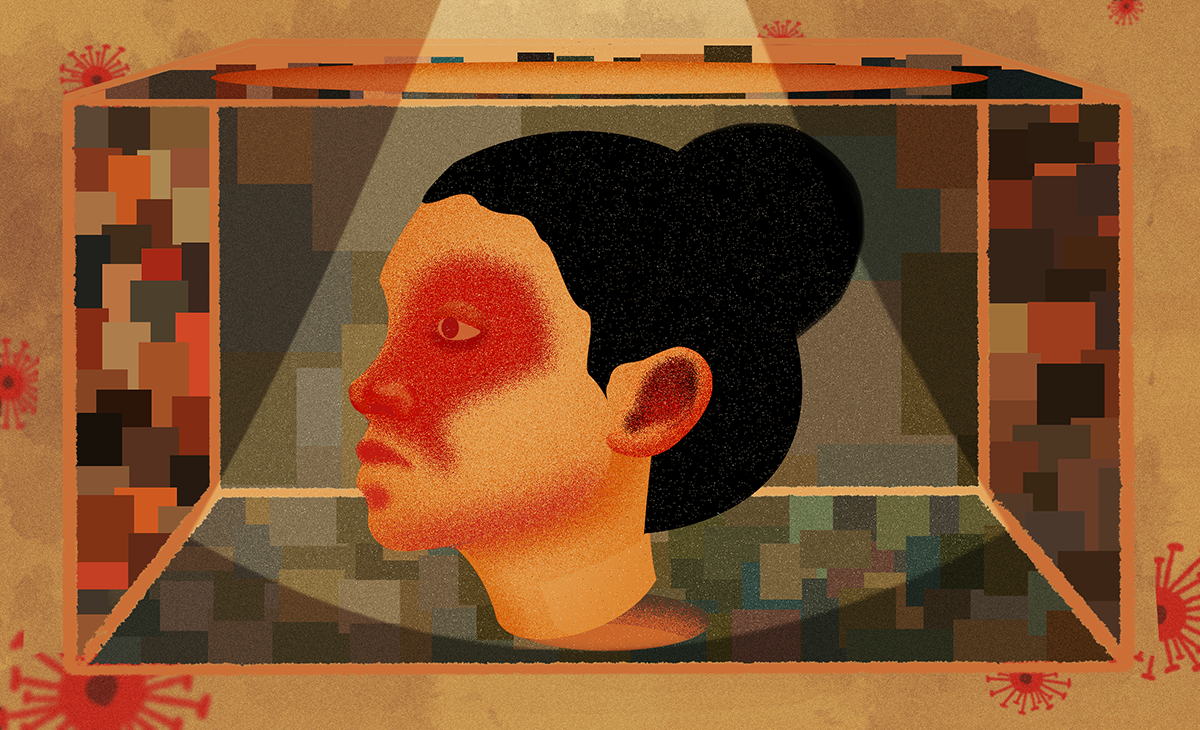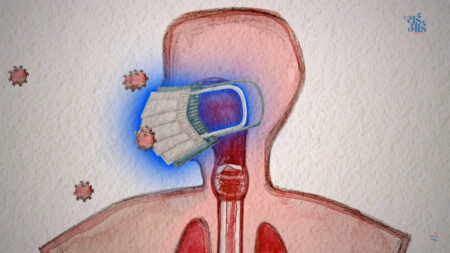As part of The Third Eye’s Public Health edition, we spoke with a wide spectrum of experts, community leaders and practitioners — what works, why it does, and what an equitable public health system could look like.
Dr. Sanjida Arora is a doctor and public health researcher at the Mumbai-based Centre for Enquiry into Health and Allied Themes (CEHAT), a multi-disciplinary team that undertakes research in medicine, life sciences, economics, social sciences, social work, journalism, science and law. CEHAT has bridged the gap between health research, interventions and people’s movements. Here, she talks about how public health systems can serve the public better if there was more reflection on gender biases and structural violence.
How would you define public health, or, how does CEHAT look at public health?
I would say that public health is more than prevention; it’s also about health promotion. So when I say health promotion, I mean to say that it’s an intervention that continues to happen with people even in the absence of disease. That your government and the people are constantly working towards a better quality of life. So, it’s not only about provision of health care, or prevention of the diseases, but also organised efforts towards a better quality of life. Hence, the water you drink, the sanitation around you, the nutrition you have access to, all come under public health. As do awareness generation activities.
Public health, I would say, is not a one-sector job. Collaborative, multi-sectoral efforts are required for public health interventions. There can’t be just one ministry to look at public health…It doesn’t need the vertical approach. It requires a horizontal approach, which integrates other interventions because health is for public good.
And the third thing I would like to say, and it is my favourite in the public health approach, that evidence generation is at the heart of the public health. Whatever public health interventions are there, they need to be based on evidence, and the evidence needs to be from the ground.
When you say public health is a collaborative, multi-sectoral effort, which sectors would be involved in this?
I would like to give you an example from CEHAT’s work, which considers violence against women as a public health issue.
When we say that violence against women is a public health issue, what we try to say is that the health system’s response can help in early identification of women facing violence, which can prevent more severe health consequences.
Because, you know, the woman has inevitable contact with the health system through her pregnancy or through the immunisation of her child.
Even if she doesn’t come to the hospital to seek treatment for herself, she will come for pregnancy or to vaccinate her child. So, if a public health intervention identifies [any woman] facing violence based on certain signs and symptoms, [she] can be informed that there are services for her that exist when she comes to the hospital.
Maybe she will reach out when she needs it, because she knows it exists.
We work extensively with the health system to strengthen its response towards violence against women. And within that, we have stakeholders, like for example, we have the criminal justice system, civil society organisations, and also government bodies. Like we work with the One Stop Crisis Centres, which come under the Ministry of Women and Child Development.
Did CEHAT have to fight for violence against women (VAW) to be recognised and treated as a public health issue?
Of course. Because they will say that this is a social problem, and it’s not the health providers’ responsibility to identify and provide first line support to the women.
But when we say it is a public health issue, we are saying that violence against women has physical and mental health consequences. And that early identification helps in preventing the serious consequences, which require hospitalisation, and in turn, increases health burden and health expenditure.
The third thing we say is that VAW is so heavily stigmatised that making it part of mainstream public health initiatives can help us generate much-needed evidence for policy change. For example, documentation of medical evidence of intimate partner violence can help make a case for criminalising marital rape. At least hospitals keep records, so we will have a larger, organised evidence base of cases of violence.
When the pandemic hit, The Third Eye had collaborated with CEHAT to explore how the lockdown increased domestic violence cases exponentially and the methods deployed to identify such cases. Violence against women was called the shadow pandemic last year. But in the second wave it hasn’t really emerged as a public conversation…
I would say that is because the cases of violence are not reaching the hospitals, and the only cases that are reaching are those that require abortion, specifically cases of rape survivors.
And then we have the other cases of teenagers or adolescents, who, although they are in a consensual relationship, because of POCSO their relationship is criminalised, and they are pregnant, but they can’t access abortion. When an adolescent pregnancy comes to the hospital, healthcare workers are afraid and say go bring an FIR and then only we will do a procedure. The hospitals we work with [BMC], we say, make an entry in the police diary but don’t make the adolescent wait and go through this. The police can come later and make a statement. Else girls were made to go to the police station and lodge an FIR before any medical care was given to them.
In the BMC hospitals in Mumbai, CEHAT runs 11 Dilaasa centers, which are hospital-based crisis centres. The healthcare providers and nurses in the 11 hospitals are trained to identify women who may have [suffered] violence and then provide them first-hand support. What we hear from these Dilaasa centres is that active violence case identification has reduced because the healthcare providers are really overburdened with Covid-related provision of care.
So I agree with you that during the first wave there were many reports that VAW has increased, but in the second wave, no one is talking about that. In the first wave, we at CEHAT got a lot of cases, you know, calls from survivors, saying that there is crisis in the home because abusers are locked in the same room as them. But during the second wave, frankly speaking, we are not getting any calls and the only women reaching the hospitals are those in need of abortions.
What are some of the lessons that you feel CEHAT as an organisation, or you as an individual researcher has learned that you feel should be integrated in public health policies?
To begin with, to strengthen primary care centres. We are heavily invested in tertiary care, and these tertiary care [specialised in-patient care] facilities are burdened with Covid cases. But why are our primary care centres only equipped to cater to maternal care and child immunisation? If they provide some secondary level facilities it can ease the burden.
For example, people in our field are saying that tuberculosis – just like violence against women – is emerging as a shadow pandemic. Many TB patients have missed their doses, which actually has a bad prognosis for the patient. These patients should have been handled by the primary care centres. They should have been equipped.
The other thing we need, as far as the health system is concerned, is the effective regulation of the private sector.
We have laws, like the Clinical Establishments Act. [An act that mandates registration and regulation of all clinical establishments to enable standard practices and quality control. With the exception of the establishments under the military forces, all public and private establishments, including AYUSH establishments, are required to register.] But the implementation is weak, because of which the private sector is growing. The private sector is responsible for more than 80% of the outpatient care and 60% of the IPD care in our country. [Source: Lancet Report, 2015]
And crucially, 70% of health expenditure in this country is happening out of pocket, and not through any kind of insurance. [Source: Finance Commission Report 2021-26, Pg 264]
Why would that be the case? What about state and central health insurance schemes?
[There are] multiple reasons but can mention one here: we did a study of state health insurance scheme, which is by Maharashtra, the RGJY Yojana. When you see the list of empanelled hospitals and private hospitals under the Pradhan Mantri Yojana, they empanel them based on a certain quality of standards, and they also fix the rate for certain procedures. But these hospitals are very unevenly distributed, and become scarce as you move from urban to rural. In some districts, there are 50 empanelled facilities, and in the other there are hardly any. They have to travel a lot to avail the services.
And we found that although people are getting covered for tertiary procedures, they are spending so much on travelling and even on follow-up visits at the healthcare facilities that offer the insurance, that it’s ultimately not beneficial for them to avail the healthcare through these insurance schemes. The distance travelled and the corresponding loss of wages add to the cost of treatment.
The public health discourse in this country lacks the public; there is no consultation with the people for whom the policies are made.
We see a huge trust deficit too, in people’s relationship with public health facilities and services. We see this most glaringly in widespread vaccine hesitancy in rural India as well as in the urban poor. Why do you think so?
I would say there is lack of empathy among healthcare providers in the public health facilities, the way they treat common people. It is obvious that there will be mistrust. We acknowledge that healthcare providers are overburdened, they are working amid a lot of challenges – from lack of health infrastructure to lack of human resources to lack of diagnostic tools. And medical education training lacks effective communication skills with the patients. But at the same time, the same graduate healthcare providers in the private health facilities are in a different avatar!
I would like to give an example. We did a study on healthcare providers’ perceptions about labour room violence. Based on our experience in public health facilities, we know that this is a common phenomenon where they restrain women, shout at them. Basic things are denied to her, like, for example, they are asked not to use the washroom but just to stick to the bed and lie down. And the nurses are slapping women. So we did a study to understand what healthcare providers say about this behaviour.
What they say is that such behaviour is important for us to have better birth outcomes, otherwise, the women will not cooperate with us. They genuinely believed that restraining and slapping women in labour had better birth outcomes, and within this, they would name a community and say women from X community are the most “stubborn”.
The problems run very deep. Our public health system needs to respect the public it serves.
Would you have any ideas or recommendations on how to make primary health centres, whether in cities or in rural, less gender-blind?
We did a project in collaboration with the UNFPA which is about integrating gender in medical education, and we also work with the health system on the issue of violence against women, and from our experience, we know that healthcare providers – they are a part of this society – and because of this socialisation, they are completely gender blind.
We say that the biomedical model of care which is like kya symptoms hain, accha bukhar hai, yeh lo, woh lo, this is actually a very superficial model of care. And that’s where social determinants of care come in – which is a foundational public health idea. We have to look at a person’s caste, class, gender and cultural location while deciding methods of care.
For example, shouting at the woman who did not come for her last two antenatal care visits not is not going to help. Nor is scolding a woman who does not take her iron tablets. The doctors need to understand or identify that what the actual problems are because of which the woman is not getting adequate care at home or is not able to follow up with her health facility. And, this is important, we say that this is a part of their job, because ultimately, this will reduce the health burden on the state.
Coming back to your question, I would say that integrating gender in medical education is the primary thing, because [doctors’ and nurses’] education has so many biases against the women. For example, if you see the description of malaria in medical books, they say this disease occurs in men because they work in fields.
The etiology of the disease is not discussed in the context of women. Or whenever they describe a heart attack, it's based on the evidence from a male's body reaction. No one studies how a heart attack takes place among females. Medical textbooks study and quote a male body; unless of course, it is for childbirth.
How does CEHAT address this?
We do gender training with healthcare providers, and provide pedagogical input. We have done a big study on medical textbooks and identified gender gaps. And with a team of healthcare providers in Maharashtra, we developed the gender-integrated content on some of the topics. We have also taught those topics to MBBS students in medical colleges, and we also advocated with the Maharashtra University of Health Sciences to include those modules into their curriculum. We said that whatever existing syllabus is there, we need to integrate a gender lens in that. It can’t be a standalone thing.
Another example. In Aurangabad and Miraj Sangli, we trained doctors to identify violence against women as well as provide them their first line support. And the training also covered the aspects like what is the difference between sex and gender. What is intersectionality. What is patriarchy. Because we thought that clarity about these concepts is important for a healthcare provider for bringing them to a point where they say, “Okay, it’s important for me to identify and provide first line support.”
When we did an assessment of their attitude scores post-training (attitude scores calculate acceptability of violence like, is it okay to beat women if they don’t cook food), their acceptability of violence as the norm had decreased.
But this is a continuous process, of course, it needs concerted efforts to rebuild a trust in public health, and also, to make public health speak to people’s realities.





